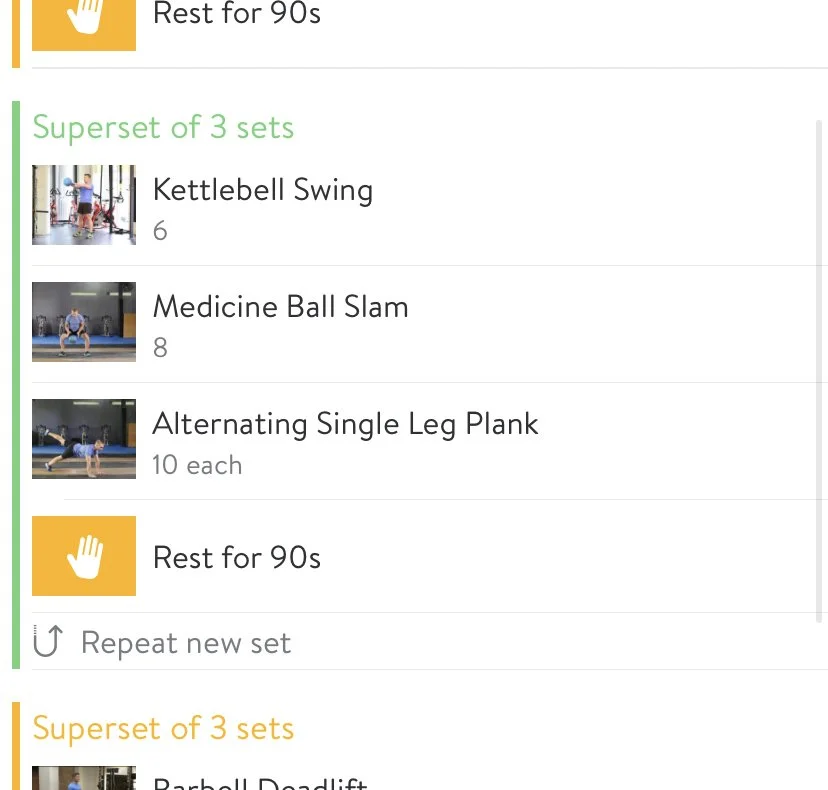5 STRATEGIES FOR THE MOST EFFECTIVE MOVEMENT PREP
CREATINE. BETA-ALANINE. C4. N.O. EXPLODE. JACK3D.
That’s what most people take before a workout to give them the advantage against the weights they’re about to slay. Or at least that’s what they think will give them the advantage.
What actually makes for the best, most effective workouts? An effective and specific warm-up…or as we prefer to call it, effective and specific movement prep.
We’re not talking about hopping on the treadmill or elliptical for 5 minutes, going max speed, and then getting under a bar. We’re also not talking about spending 30-45 minutes on your movement prep and then getting into the workout. Both of these are very incorrect, actually.
We would argue the movement prep is just as, or more important, then the training session itself. Every movement prep we program isn’t looked at from the 10 minutes that it takes you to complete, but more at the cumulative effect of day-in and day-out consistency. If you take a 10-minute warm up, training 5 days per week for 48-52 weeks in the year, that is a total of 2400-2600 minutes. That’s 40-43 hours over the course of a year.
Here is an example of a movement prep we have for a past patient that is now in our monthly strength programming service:
Let’s Get Into What We Believe Makes For An Effective Movement Prep:
Core Temperature: This gets your body warm. It increases your breathing and preps the tissue for work. This includes things like a 5-min jump rope variation, rowing, biking, or anything that accomplishes the goal of warming up the tissue and getting the body warm/sweating.
Dynamic Stretch: What we want to achieve through the dynamic stretch is to make improvements to your range of motion. We avoid static stretching at all costs prior to activity because it will decrease the neural output. This means that your body’s nervous system is not being activated, therefore not ready to do work. Instead, we focus on dynamic stretching to increase the neural output, which increases your ability to achieve greater force output. We don’t need to be too specific yet. This is more general.
Mobility: We want to move towards more specific mobility drills to address the joints/tissues/movements that you’ll be completing working that day. We’ll have examples later on, but these are your banded joint mobilizations, ankle PAILS/RAILS, hip rotations, etc.
Activation: This is where some people do too much. You don’t want this to be your workout. Or to really fatigue the system at all. This activation needs to build on the dynamic movements to excite your neurological system. This activates the specific muscle groups that you are going to be using throughout the workout. Examples for the lower body include mini-band squat holds, monster walks; for the upper body we like shoulder hurdles, swimmer band exchange, I’s/Y’s/T’s.
Power/Explosive Work: this gets your central nervous system ready to crush the workout. Here is an example for the same client listed above:
Core Temp
Jump rope for 3-5 minutes. Switch every 30s
Normal jumprope
Split stance jump each leg
In and out jumprope (knees together, apart)
Single leg jumprope
Mini-Squat jumprope
Dynamic:
World’s Greatest Stretch 1×8 each
Bird Dogs 1×10
Thoracic Rotations 1×8
WORLD'S GREATEST STRETCH
Mobilize:
Ankle PAILS/RAILS 1min iso hold and then 1 min of 5 contract-relax
Posterior Hip Opener 1-2min each
Assisted Hip Airplanes 1×10 each
HIP AIRPLANES
Activate:
Banded goodmornings 2×8
Banded Hip Hinge Assist 2×8
BANDED HIP HINGE
Power/Explosive: Superset 3×8
KB Swings
Med Ball Slams
Plank Variations
SIDE PLANK
LOOKING FOR MORE HELP?
*This is helpful information, but it is general information. This is NOT medical advice. If you already have any injury, pain, tightness, etc., please seek help from a licensed and qualified healthcare provider like us, performance physical therapy in Green Bay. A complete solution for what you’re dealing with needs to be customized to all the different factors driving your pain, and those factors will be at least slightly different for each person. These strategies may help, but they’re not likely to be a complete solution for each individual reading this now or in the future.


